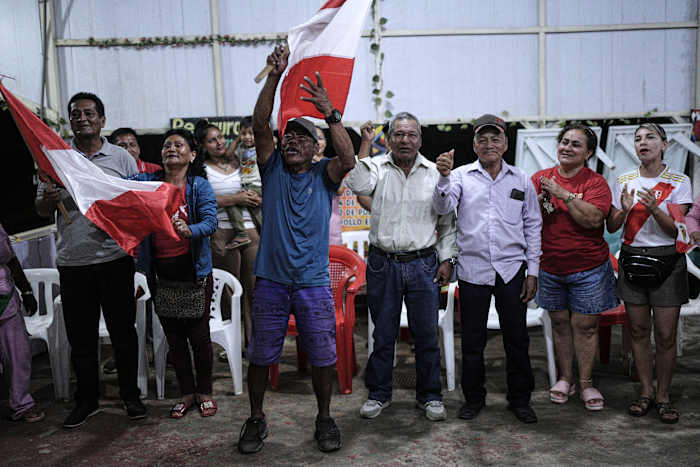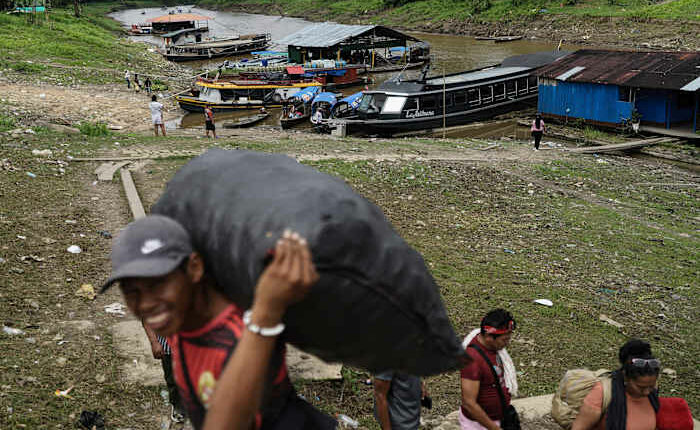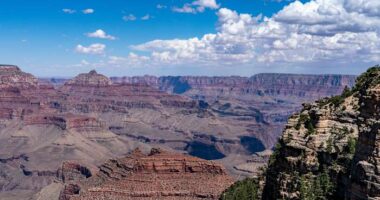Share this @internewscast.com

SANTA ROSA – Situated on a remote island in the Amazon River, Santa Rosa is now in the midst of a territorial disagreement between Peru and Colombia. This single paved road serves as the main street, lined more with nightclubs and evangelical churches than any other establishments.
Named after a saint from the 16th century, Santa Rosa lacks essential amenities like running water and a sewage system for its 3,000 inhabitants. To protect their homes from annual floods, residents build their one-story dwellings on stilts. Although they are Peruvian, they frequently cross the river to nearby Colombian or Brazilian cities for medical assistance, due to the inability of the outdated local health center to manage even basic healthcare needs.
“Our island suffers from many needs,” stated Marcos Mera, who owns a restaurant and dance venue in Santa Rosa. He expressed this as he wiped sweat from his face while arranging tables.
Even though Mera and his fellow residents have long faced these challenges, sudden interest from the Peruvian government has brought Santa Rosa into the limelight. This surge in attention, which even prompted a presidential visit, came after Colombian President Gustavo Petro recently raised questions about Peru’s claim over Santa Rosa.
Peru asserts its ownership of Santa Rosa Island based on century-old treaties, while Colombia challenges this claim, arguing that the island had not formed when those treaties were established.
The locals proudly identify as Peruvians, despite their dependence on surrounding countries for essential services. They now wish their government will continue to acknowledge their plight, a hope President Dina Boluarte addressed during her recent visit.
“It’s true that, for too long, our border populations have not received the attention they deserve,” Boluarte said Friday during her first-ever visit to the island.
Recent tensions between Peru and Colombia have escalated into a series of incidents, including the arrest of three Colombian men who were on the island doing land surveying work. The arrests, described by Petro as “kidnapping,” prompted a dispute over the workers’ rights to be in Santa Rosa. They marked the third binational incident in the area since Petro denied Peru’s jurisdiction over Santa Rosa Island in early August.
“We are Peruvians, and if necessary, we will defend our island with pride,” said José Morales outside his currency-exchange house where he trades Peruvian soles, Colombian pesos and U.S. dollars. Residents often carry all three currencies, plus Brazilian reals, at once.
Most residents of Santa Rosa collect rainwater, which they filter through a white cloth and then boil, often using wood-burning stoves. Reaching the island takes a two-hour flight from Colombia’s capital, Bogota, followed by a five-minute boat ride. In contrast, the trip from Peru’s capital, Lima, involves a two-hour flight followed by a 15-hour boat journey.
The parents, children and grandchildren of many Santa Rosa residents live in Leticia, Colombia, or Tabatinga, Brazil. Some have also buried their loved ones in those cities, too, as Santa Rosa does not have a cemetery. Several residents said they have a cordial relationship with people in Colombia and Brazil.
“We live peacefully, sharing culture, gastronomy and good ideas,” Mera said before criticizing Colombian politicians saying he thinks they “have made a mistake.”
Some, however, are going as far as thanking Colombia’s president for drawing interest to Santa Rosa.
“I have to thank Petro for speaking out like that,” nurse Rudy Ahuanari said. “In all these blessed years, no minister had ever shown interest in us, but now he has. We were truly forgotten — not even God remembered.”
____
Copyright 2025 The Associated Press. All rights reserved. This material may not be published, broadcast, rewritten or redistributed without permission.












